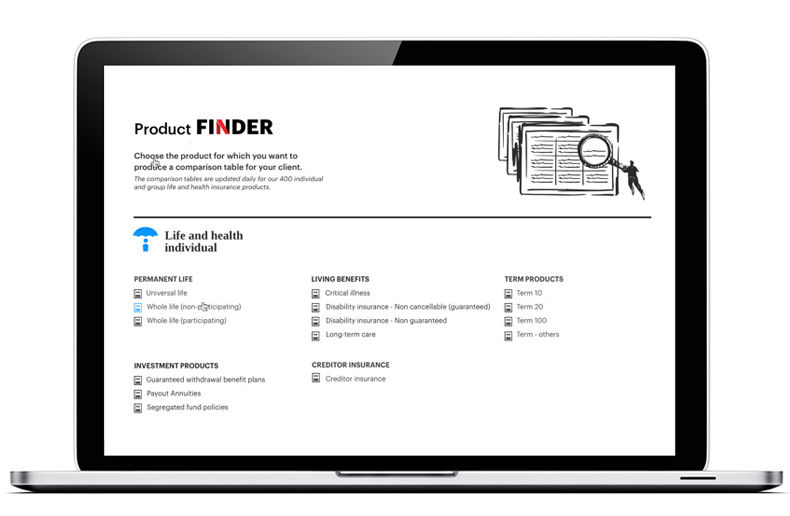According to Grant Kelly of the Property and casualty insurance companies of Canada (PACICC), the financial results of the third quarter of 2023 for Canadian property and casualty insurers reveal three significant trends.
The chief economist’s comments from PACICC are published in the bulletin “Solvency Matters,” which the organization releases quarterly. Mr. Kelly presents his analysis based on data provided by MSA Research.
Mr. Kelly reminds us that it is not possible to compare all performance ratios with those of previous years due to changes made since January 1, 2023, to the IFRS 17 standard.
Investments
As the first observed trend, Grant Kelly notes that investment results (or investment income in the table below) have returned to a profitable trend. This is a turnaround from a year earlier when insurers were experiencing negative repercussions from the rise in interest rates on their bond portfolios.
The return on invested capital (ROIC) was 2.7% after nine months in 2023, compared to a loss of 2.2% for the same period last year. This reversal of investment results represents $1.8 billion as of September 30, 2023, compared to the same date a year earlier.
Insurance operations
The second trend identified by the PACICC’s chief economist is a slight deterioration in the overall insurance results of the industry. Indeed, insurance activity revenues increased by 8% compared to last year, but the rise in expenses related to insurance activities was even higher, at 9.1%.
The difference between the two reduced the net result of insurance activities by $94 million. The term “insurance result” is the new designation resulting from the IFRS 17 standard, which was previously presented as underwriting income.
To explain this slight decrease of 1.6% in insurance results, Grant Kelly emphasizes issues in the personal property insurance loss ratio. The net ratio for insurance activities settled at 111.6% for the first nine months of 2023, weighing on the insurers’ core capital, according to the PACICC.
Catastrophic losses far exceeded the $3 billion mark in 2023, according to data from the CatIQ index reported by the Insurance Bureau of Canada.
Mr. Kelly reminds us that the new net ratio for insurance activities is similar to the claims-premiums ratio under the IFRS 4 standard, but it generally associates with higher figures. This new ratio includes acquisition costs, encompassing commissions and reinsurance, as well as the impact of unprofitable contracts.
Fortunately, the overall situation of insurers has been compensated by better results in the net ratio for insurance activities in auto insurance (92.6%), business property insurance (86.6%), and business liability insurance (80.2%).
Returns
The last trend reported by the economist concerns the return on equity (ROE), which stood at 11.5% on an annualized basis after the first nine months of 2023. “This figure aligns with the long-term average ROE prior to the implementation of IFRS 17. Between 1975 and 2022, the Canadian P&C insurance industry posted an average ROE of 10.5%,” states Grant Kelly.
Consequently, as the ROE of the previous two years had been abnormally high, the 2023 exercise can be termed an “average” year for the industry, he concludes.
Systemic collapse
As was the case in its fall 2023 bulletin, PACICC continues to be concerned about the systemic collapse of the industry in the event of a major catastrophe stemming from a significant earthquake in Canada. Coverage for this risk is still not mandatory in the country.
Even for those insured against earthquakes, damages resulting from secondary risks such as tsunamis and avalanches are generally not covered.
Grant Kelly writes another article in the bulletin about the concept of “resolution.” In the context of insurance, resolution is defined as an action taken by regulatory authorities towards an insurer that is no longer viable and has no reasonable prospect of returning to viability.
Resolution measures include portfolio transfer, claims liquidation, restructuring, and liquidation. The Office of the superintendent of financial institutions (OSFI) asks PACICC to prove that it is ready for resolution.
To do so, the organization must have the necessary funds to quickly reimburse unearned premiums and pay eligible claims of policyholders in case an insurer loses the confidence of regulatory authorities.
PACICC has the authority to collect an annual general assessment that can represent up to 1.5% of the direct premiums underwritten by each member insurer. This assessment can be collected for as long as necessary in the event of an insurer’s insolvency. The amount that PACICC can demand from its members is capped, which will be $1.2 billion in 2024.
In the event of an insurer’s bankruptcy, there is a certain period between the collection of the assessment by PACICC and the announcement of insolvency. During this period, policyholder protection is maintained.
The organization has two sources of liquidity. First, its Compensation fund totaled $59.6 million in December 2023. Assets must be accessible within 48 hours. Mr. Kelly recalls that PACICC has never had to resort to this fund since its establishment.
In 2021, a report by the Eckler firm indicated that the Fund was sufficient in the event of bankruptcy for the 100 smallest insurers members of PACICC, but it would be insufficient in the event of bankruptcy of one of the 70 largest member insurers. As a result, PACICC negotiated a credit capacity of $250 million through a consortium of six major Canadian banks.
With over $300 million in liquidity accessible through the Fund, PACICC has the financial capacity to reimburse unearned premiums and settle up to six months of expected claims for 135 of the 169 member insurers.
By limiting itself to the reimbursement of unearned premiums only, PACICC has the capacity to cover 152 of the 169 member insurers. If insolvency occurs among one of the 17 largest member insurers, these reserves are insufficient.
Based on this finding, Grant Kelly indicates that PACICC continues to discuss with OSFI to seek alternative solutions to liquidation, including a resolution protocol.
In the event of the bankruptcy of a significant insurer, different tools will be required, such as portfolio transfer, reinsurance, or the use of a bridge insurer, concludes the economist.
Regarding the bridge insurer, elsewhere in its latest quarterly bulletin, PACICC indicates that this is a priority issue. It aims to have this process approved by OSFI by the end of 2024.







